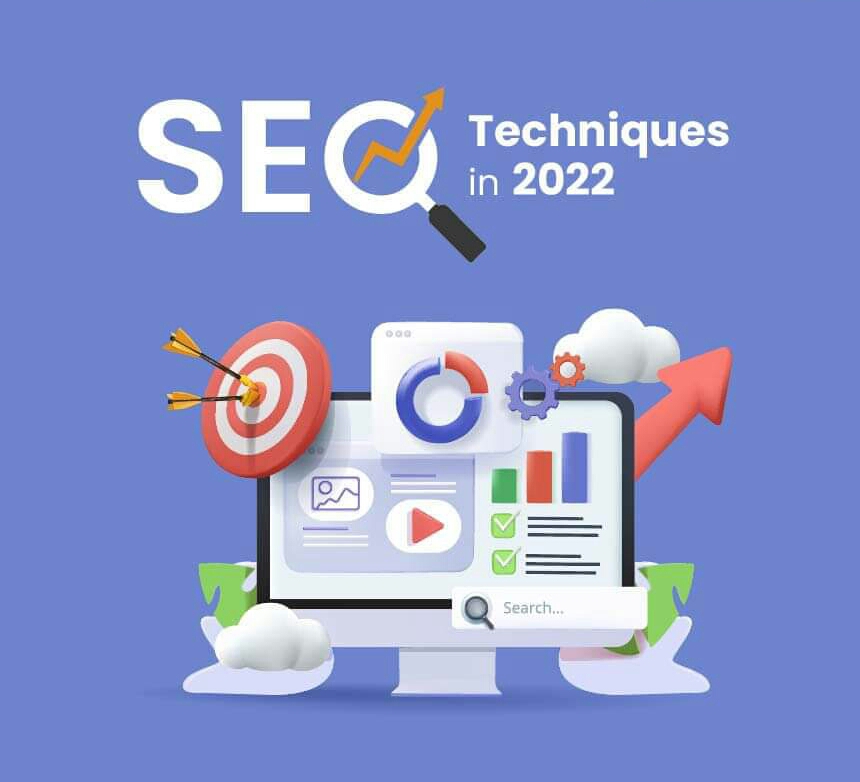Search Engine Optimisation (SEO): The Best Way to Get Website Organic Traffic

Search Engine Optimisation (SEO): The Best Way to Get Website Organic Traffic
No doubt about it, Search Engine Optimisation (SEO) is the best way to get website organic traffic.
SEO is an abbreviation for “search engine optimization” In layman’s words, it refers to the process of enhancing your website so that it appears more prominently when people search for items or services connected to your company on Google, Bing, and other search engines. The higher the exposure of your pages in search results, the more likely you are to draw attention and attract new and existing consumers to your business.

Bots are used by search engines such as Google and Bing to crawl websites, traveling from site to site, collecting information about those pages, and indexing them. Consider the index a massive library where a librarian may pull up a book (or a web page) to assist you in finding exactly what you’re searching for.
Afterward, algorithms analyze pages in the index, considering hundreds of ranking variables or signals to determine the order in which pages should appear in search results for a given query.
Since individuals do many searches yearly, frequently with commercial intent to find information about products and services, SEO is a critical component of digital marketing. Search is often the key source of brand digital traffic, supplementing other marketing methods. Greater visibility and higher placement in search results than your competition can significantly influence you.
However, search results have evolved in recent years to provide users with more direct answers and information that is more likely to retain people on the results page instead of pushing them to other websites.

The following points can very well understand the need and significance of search engine optimization:
– Increases consumer acquisition through organic search
Organic search accounts for 53.3 percent of all site traffic, and 60 percent of marketers say their best leads come from SEO-engaged clients.
To be viewed by clients, you must rank on the top page of Google. Climbing to the top spot can nearly quadruple your click-through rate over the second slot. So the volume is there, and ranking for key search words will help you attract the proper clients. And by putting the site on the main page, the developer increases your brand’s visibility and demonstrates that you are a reliable resource.
– Boosts brand awareness
When you boost your rankings, one ancillary factor aside from converting consumers into customers is overall brand awareness. The more touch points you generate simply by hitting the front page and climbing closer and closer to the top place. Even if they don’t click through to your site, being there will cause potential customers to link your brand.
– It can be tracked.
The ambiguity of your return on investment is one of the most aggravating aspects of traditional marketing. Based on traffic patterns, billboards receive an average amount of views. Rating systems are used in commercials to evaluate general sentiment. However, SEO is quantifiable and can easily be included in any paid digital strategy.
After understanding the relevance of SEO in modern digital marketing, let’s look at the various steps involved in optimizing the website.
To begin with, there is no substitute for the quality of the content. Quality content tailored to your target audience enhances site traffic, which boosts your site’s authority and relevance. Authoritative and exceptional content keeps the viewers on the website. Identifying the keywords phrase for each authoritative content page; for instance, the readers may search What to study after class XII?, What are the different streams to opt for after class XII?, Which stream is best after boards?. Placing the keywords in URL, page title and heading, and sub-heading comes next. Aside from the page URL, title, and headers, content significantly influences search engine rankings. Repeat the keyword phrase numerous times across the page—once or twice in the opening and closing paragraphs and two to four times more throughout the rest of the text. Be commanding—strategically link to essential sources and supplementary information within and outside the organization’s more extensive website.
Highlight these keyword phrases with bold, italics, header tags (mainly an H1), and other emphasis tags—but don’t go overboard. You still want your language and writing style to come off as natural. However, one should never sacrifice decent writing for the sake of SEO. The most significant pages are written by the user, not the search engine; this should always be kept in mind.
Secondly, the content should be updated regularly. Regularly updated content is viewed as one of the best indicators of a site’s relevancy, so one needs to be sure to keep it fresh. Auditing the content on a schedule and updating as required should be practiced. Blogging is another significant input to enrich the website’s content and make it more attractive.
Writing additional content, rich with keyword phrases, on the departmental news blog can also boost the search engine rankings. Blog posts can be shorter updates about the specific topics you are targeting and interlinking your related CMS webpages. Blog posts help give the reader a better picture or additional information about the topic.
Thirdly, when creating the website, leave a space between the head and tags for metadata or information about the page’s contents. If you have a CMS site created by the UMC web team, this data will be pre-populated. However, as the site evolves, it is critical to evaluate and update the metadata.
Fourth, have a link-worthy website.
A content-rich, authoritative, unbiased homepage that helps visitors learn more about what they are interested in is more likely to get links from other websites, improving search engine optimization.
Add relevant links within the text to boost your authority and trustworthiness. For example, try writing out the product’s name instead of using “click here” links.
And at last, always describe the image and video media using alt tags or alternative text descriptions. They allow search engines to locate your page, which is crucial—especially for those who use text-only browsers or screen readers.
SEE ALSO : 9 TYPES OF CONTENT WRITING
How To Write SEO Optimized Content Like A Pro
Some serious efforts are required to generate organic traffic on your platform with higher rankings and prominent visibility in SERPs.
These factors should be maintained consistently to achieve a better optimization rate on your site. And the best way to attain that sustainability is by creating SEO-optimized content.
Writing SEO-optimized content
Now that we have understood the requirements of search engines and how the content can affect website optimization, let’s discuss some valuable tips for writing SEO-optimized content.
1. Identify the targeted audience
Instead of just generally presenting information on a webpage, make it more specified for an audience.
Understanding who your readers are or whom you are writing for is preferable. Web content writers often overlook this concept, which drastically affects the readability score of a website.
2. Identify the topic
Like the first writing tip, you can choose the topic according to the search queries of a specific audience group.
Before creating content for your website, identify what your website’s name represents. It is vital to feature content on topics representing your website’s name and purpose.
3. Focus on keyword research
Once you have found the topic to write, it’s time to identify the keywords to feature in various positions within the content.
Keywords are the building blocks of well-optimized content that connect users’ search queries and the website.
Short tail keywords
Any keyword containing less than three words is considered a short tail keyword. Short Tail keywords get more traffic and generally have high competition for them.
Such keywords cover a wide variety of topics, and they are featured in almost every section of a website’s content.
Long tail keywords
These are the types of keywords that consist of three to five words. Long Tail keywords are topic-specific.
They are not as effective as short-tail keywords in generating traffic. They have low search volume and competition level, but they are essential for targeting niche-specific queries.
4. Create a good structure
The outline of web content refers to the structure and headings you will feature within the body of the content.
The general outline of good content is placed in the following order: Introduction, body, and conclusion.
5. Learn how to paraphrase
The paraphrasing technique helps to improvise the overall quality of your written content.
A writer needs to know paraphrasing techniques. But manual paraphrasing may be lacking in some aspects of web content writing.
6. No grammatical or spelling mistakes
Written content with grammatical errors and spelling mistakes imposes the worst impression on its readers.
It can be bad for your SEO as search engine crawlers may ignore content with errors.
By reading this post (Search Engine Optimisation (SEO): The Best Way to Get Website Organic Traffic) am so sure you have had reasonable knowledge about Search Engine Optimisation (SEO) which is the best way to get website organic traffic.

Comments are closed.